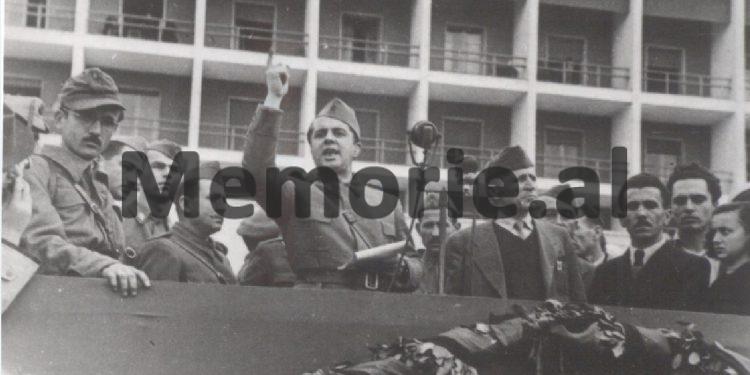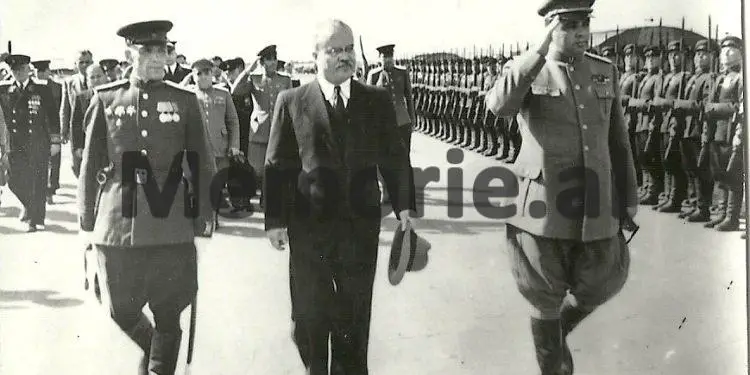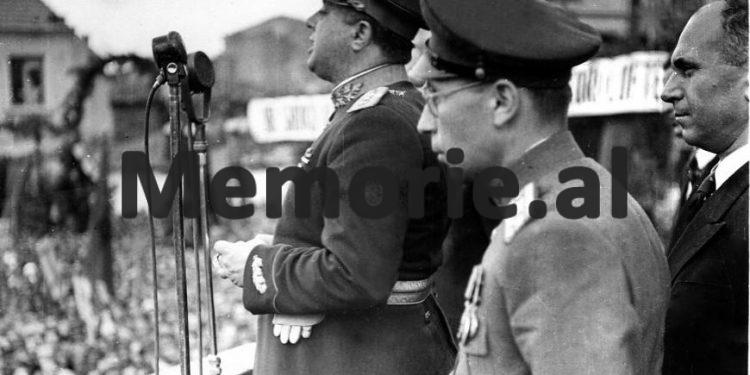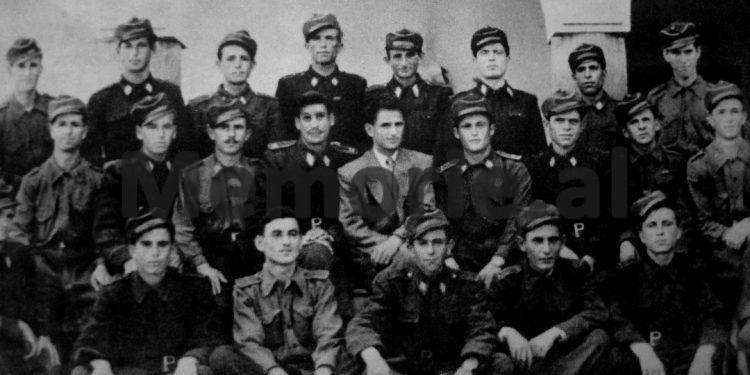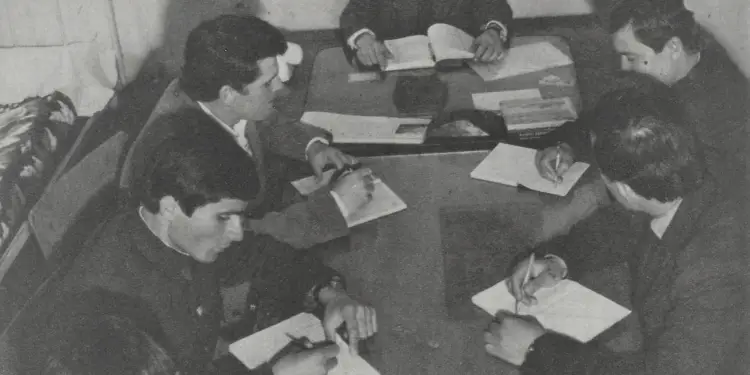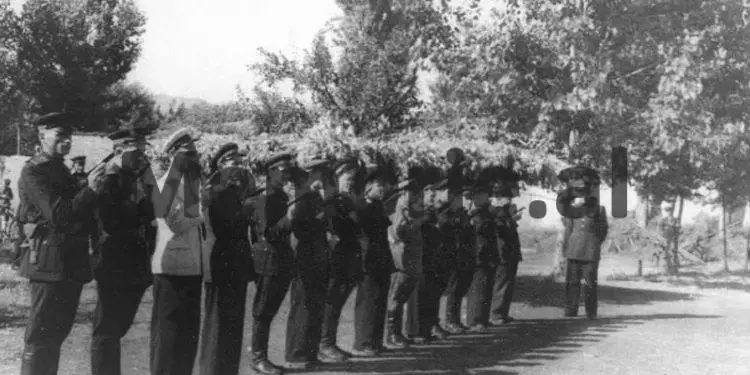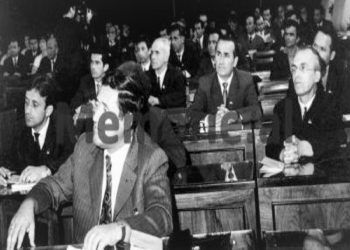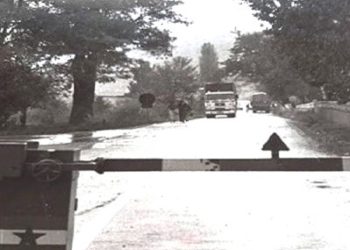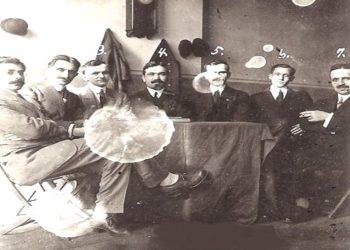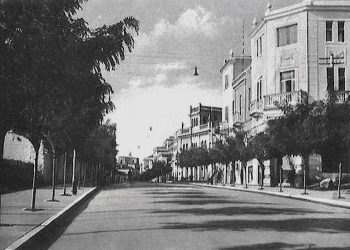By Kastriot Dervishi
Memorie.al / One of the most efficient weapons of the communist dictatorship in Albania, which also showed the degree of development of this dictatorship, was the State Security – often referred to as the “watchful eye of the Party”. Such a machine provided power for years to the ALP and became an inhibiting factor in democratic developments in the 90s. Precisely to know something more, in the organization and functioning of this body, we thought that such an article would be of interest. Because the level of an information service also shows the level of consolidation of power, at any time.
The history of espionage in Albania
Although Albania was recognized as a state on July 29, 1913, for many years, for various reasons, it failed to build the natural structures of the state. After the Congress of Lushnja, it was seen that the construction of the main institutions of the state was starting. However, it was not possible to talk about the construction of a real informational network. After the events of 1924 and after the ‘Triumph of Legality’, Ahmet Zogu managed to build the first Albanian secret service.
This service was part of the Ministry of the Interior and was known by the name; ‘Secret Office’. Not only was it worked with professional parameters, but it was also possible to establish a good network of agents in Yugoslavia and Greece. It should be remembered that after the communist invasion of Albania. In November 1944, the entire archive of the Ministry of the Interior was made available to the Yugoslavs, who revealed, among other things, the agents that King Zog had in Yugoslavia.
Most of these agents were killed by the Yugoslavs. It would be precisely the Yugoslavs who would create the new secret service in Albania, called ‘State Security’. Here, the starting point, perhaps not official, is April 19, 1944, when Enver Hoxha officially ordered the headquarters of the ” Revenge ” battalion to start “organizing the Information Service”.
The Yugoslav emissaries were the drafters of the initial platform of this information service. These, for their own interests, encouraged the formation of an Information Service, so that this body was not only national. With the coming to power of Enver Hoxha, Minister of the Interior, Haxhi Lleshi, who came from a family with pure Serbophile traditions?
After Haxhi Lleshi, in March 1946, in his place, Koçi Xoxe was appointed, who was also Deputy Prime Minister. The time of Xoxes coincides with the strengthening of the State Security, under the special care of Yugoslav advisers. As before, Security continued to be part of the Ministry of the Interior. Nesti Kerenxhi, Vaskë Koleci and Zoi Themeli, were among the most famous ones who were involved in the construction of the Security Arms, under the permanent supervision of the Yugoslav Councillors. It was precisely this time, after 1948, that caused the Labor Party to emphasize that it was the one in command of the Security.
After the divorce with the Yugoslavs, the State Security had an even greater professional rise, under Yugoslav patronage. Throughout its existence, State Security remained a Yugoslav-Soviet product. He always remained the “watchful eye” of the Labor Party and the “strongest weapon” of the communist dictatorship. This service never became a national service. He monitored everything that happened in Albania, to serve the maintenance of power by the Labor Party.
In 1991, in the ‘Nano 2’ government, the Ministry of Security was established, headed by Gramoz Ruçi. This is a very special case. In the summer of 1991, the law on the National Intelligence Service (NIS) was approved and Irakli Koçollari was appointed chairman. In June 1992, at the head of this institution, Bashkim Gazidede came and began the great reform of SHIK, which involved 98% of the workforce. In May 1997, after the communist rebellion and after the resignation of Gazideda, Arben Karkini was appointed at the head of this institution.
With the arrival of the socialists in power, in September 1997, instead of Karkin, the Vice-President of the Central Election Commission, Fatos Klosi, was appointed. Later SHIK changed its name to SHISH. Klosi reinstated all the old employees. At that time, SHISH was far from a National Information Service. He was a tool of the Socialist Party.
State Security Organization
The organizational method of the State Security was quite studied and hierarchical. At the head of this method was the Political Bureau of the ALP Central Committee. In this case, State Security acted according to the Platform of the Political Bureau of the K.Q, of the ALP. This was done to emphasize that; it was the Party that led the Security. For the communists themselves, who were treated or judged as wrong, the post-war time when State Security commanded the Party.
After the elimination of the “Koçi Xoxa Group”, the communist leader Enver Hoxha pointed out that; the party was on Security. In 1982, after the elimination of Mehmet Shehu, Hoxha would constantly repeat that; it was the party that discovered the “conspiracies” of Mehmet Shehu, Kadri Hazbiu, etc., and not State Security. Speaking in this way, Hoxha turned the party, among other things, into a specialized espionage body, although this may seem absurd!
Anyway, let’s move on. On the platform of the Political Bureau, among others, we essentially distinguish two main points; In one of these points, it was said that; a member of the APS, could not be an associate of the Security, without the Party’s permission. This means that; the structures of the Party were informed in advance about the reasons for the recruitment of their member.
In the next point, it was said that; secret information network; they had to make up the majority, elements that came from declassified, exiled families or that had relatives abroad.
Regarding other aspects of surveillance, Security agents were also inside prisons (ordinary or political) as well as in State institutions, such as ministries, directorates, hotels, etc., in which it was foreseen that a place certain of organics to be left to an associate of the Security.
Below the level of the Political Bureau of the Central Committee of the ALP, came the Ministry of the Interior. In this body, one deputy minister led the State Security and the other the border. The Deputy Minister in charge of Security communicated with the heads of the Departments of Internal Affairs in the districts and the 3 directors of Security.
- First Directorate of Counterintelligence.
- Second Directorate of Leadership Assurance.
- Third Directorate of Discovery.
More specifically, these directories were divided into several branches:
First Directorate of Counterintelligence:
– First Branch: Detecting the infiltration of foreign agencies, this branch dealt with the pursuit and surveillance of the suspected element, such as foreign agents. However, in many cases, State Security invented agents to justify its work.
– Second Branch: Counterintelligence detection of foreign embassies accredited in Albania. In this, the activity of the headquarters of these embassies and their personnel was fully monitored.
– The Third Branch: The cleanliness of the image of the employees of the Ministry of the Interior. In this branch, all the documentation and other data related to the employees of the Ministry of the Interior were collected. The surveillance of the effectives of this ministry included everything related to their past, such as; origin, family, education, etc., as well as lifestyle outside of duty. It was not without importance, monitoring the employee in his work profile. This form of surveillance increased the employee’s loyalty to the dictatorship and guaranteed an important body of this dictatorship.
– Fourth Branch: Administration of operational documents. This branch, as the name suggests, administered the archived files and the files containing data on the collaborators and the persons being followed. In addition to these, this branch also administered the institution’s documents.
– Fifth Branch: Operational technique.
This branch dealt with the administration of the Security’s operational technique, such as recorders, cameras, etc., as well as anything used as a means of surveillance or recording. It was among the most important branches of the First Directorate.
– Sixth branch: Security of the Army.
This branch guaranteed the “purity” of the personnel of the Ministry of People’s Defense and had under control the possible activity of “enemies” against military equipment. However, this sector, in many cases, supported the theories created by Enver Hoxha, when he hit groups of soldiers.
– Seventh Branch: Detection of economic crimes.
Through the network of informants, this branch aimed to find “saboteurs” who caused “economic crimes”. However, this sector, from an organizational point of view, was suppressed later, to be attached to another sector.
– Eighth Branch: Detection of the activity of hostile anti-party elements.
This branch was divided into two sub-branches:
– The internment-deportation sub-branch, which dealt with the surveillance of interned and expelled elements, having a wide network of informants within this contingent.
The sub-branch of camps and prisons dealt with the surveillance of ordinary and political prisoners. Inside the prisons there was a network of inmate informers.
As for the State Security personnel, it must be said that most of them (or about 95%) came from the First Operational Zone (Vlora – Gjirokastër)
Second Directory: Leadership Assurance.
This Directory is divided into the following branches:
– Back branch. This branch oversaw everything used by the leadership, such as villas, offices, food of the leadership, their cars, etc., etc. Legal officers were on duty.
– Branch of Accompanying. This included those companions of the leadership, who were legal officers.
– Technical branch. It included the entire infrastructure of surveillance tools, such as recorders, cameras, etc., etc.
– Operational Documents Administration Branch. This branch did the paperwork administration.
The Third Directorate – Discovery –
This Directorate had its headquarters on the fourth floor of the Ministry of Foreign Affairs and consisted of legal officers, who camouflaged themselves with diplomatic functions in embassies of the SRSG in foreign countries. Thus, the Security officer, in an Albanian embassy in a certain country, camouflaged himself as a secretary or consul of the embassy and no further.
This was the middle level, where Insurance operated. In 1992 (May) when Alferd Serreqi was appointed minister, the scandal of the Foreign Ministry’s eavesdroppers, who were actually an integral part of the State Security, also broke. From the organizational side, the Third Directorate of State Security was divided into several branches:
– The first branch covered Europe.
– The second branch covered the Middle East and other countries.
– The third branch covered America and other countries.
– The fourth branch covered the diaspora. Here we can add that the network of Insurance agents has been quite large. Maybe agents in the diaspora could be more special.
– The fifth branch was the one that administered operational documents.
– The sixth branch was the one that administered the operative technique.
Secret Information Network
This network consisted of:
– Information network, without documents.
– Information network, with documents.
Information network, without documents: It consisted of a special category of special collaborators, who were sworn in before the First Secretary of the ALP. In the press, (until 2001), several names have been mentioned, who were at the head of the state and who were known as Ramizists (apparently, they were sworn in before him).
Information network with documents: In the secret information network with documents, we distinguish 4 types of collaborators of the State Security. More specifically, they are:
Resident:
He was an assistant to the Security operative and was in contact with several informants. He was a civilian, highly sought after professional, reliable and expected to be an active wartime operative. Some of them have also done special courses.
Agent:
It was a qualified State Security informant, providing key data where Security interests lay.
Informant:
He was an associate of the State Security, who provided information, according to the scheme for which he was set up.
Host:
He was an employee of the State Security, who made the apartment, office, hotel, or other facilities available to the Security.
The lodger was also called a voluntary collaborator. In the premises that he made available, among others, meetings of the operative, resident, etc. were held. All these levels of informants were pseudonyms. Memorie.al





